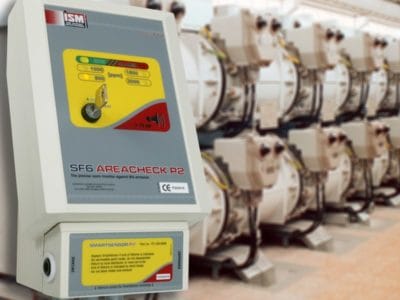
Monitoring of Sulfur hexafluoride (SF6)
Formula: SF6 | CAS: 2551-62-4
Protecting both people and the environment whilst meeting the operational needs of your business is paramount and if you have operations in the UK you will be well aware of the requirements of the Control of Substances Hazardous to Health (CoSHH) regulations and likewise the Code of Federal Regulations (CFR) in the US.
Similar legislation exists worldwide, the common theme being an onus on hazard identification, risk assessment and the provision of appropriate control measures.
The Basics of Detecting Sulfur hexafluoride
Properties | Structure | Exposure
SF6 the most powerful greenhouse gas known to humanity and alarmingly emissions have risen rapidly in recent years!
“SF6 world production was at 7,000 tons in 1993 and was expected to reach 10,000 metric tons per year by 2010. The electrical industry uses approximately 80% of that amount. In 2002, SF6 emissions from the US electric power industry totalled nearly 600 metric tons, that equates to 14.1-million tons of CO2, or 5% of total greenhouse gas emissions from US industrial processes”.
– Grand View Research
“Just one kilogram of SF6 warms the Earth to the same extent as 24 people flying London to New York return”.
– BBC News By Matt McGrath, Environmental Correspondent
”Sulfur hexafluoride (SF6) is a colourless gas. SF6 is used in several industrial applications. The insulation of electrical equipment, the magnesium casting processes, and semiconductor manufacturing are the main applications. Beside the industrial applications, SF6 is used in medical applications as an ultrasound contrast agent and as a tamponade gas in ophthalmology. It has been identified as one of the greenhouse gases.
U.S. National Library of Medicine
23,500 times more warming than carbon dioxide (CO2)
Sulfur hexafluoride Exposure 
While SF6 is a non-toxic gas, it can displace oxygen in the lungs, and cause asphyxia if too much is inhaled. SF6 gas is approximately five times heavier than air and, if released or leaked in large enough quantity, will accumulate in low-lying areas where there is no natural ventilation.
Under normal circumstances, it might be considered rare to be exposed to SF6 without enough oxygen dilution; but for utility employees, this type of exposure is well within the normal course of duties when working on SF6 filled switchgear in enclosed spaces. Indeed, if a substantial quantity of SF6 gas leaks in an enclosed area, it can pose a real danger of asphyxiation to personnel
How damaging to the climate is SF6?
- Concentrations in the atmosphere are very small right now, just a fraction of the amount of CO2 in the air.
- However, the global installed base of SF6 is expected to grow by 75% by 2030.
- Another concern is that SF6 is a synthetic gas and isn’t absorbed or destroyed naturally. It will all have to be replaced and destroyed to limit the impact on the climate.
The significant downside to using SF6 is that it has the highest global warming potential of any known substance.
Download our FREE Guide
“The Basics of Detecting Sulfur hexafluoride”
The basics of detecting sulfur hexafluoride guide which can be downloaded below provides the reader with an in-depth balance of knowledge covering the main properties, structure and exposures of sulfur hexafluoride. Once the reader has finished this guide they will be able to determine the correct solution on detecting sulfur hexafluoride. This greenhouse gas provides a health and environment risk if not monitored correctly and efficiently.










 United Kingdom
United Kingdom






